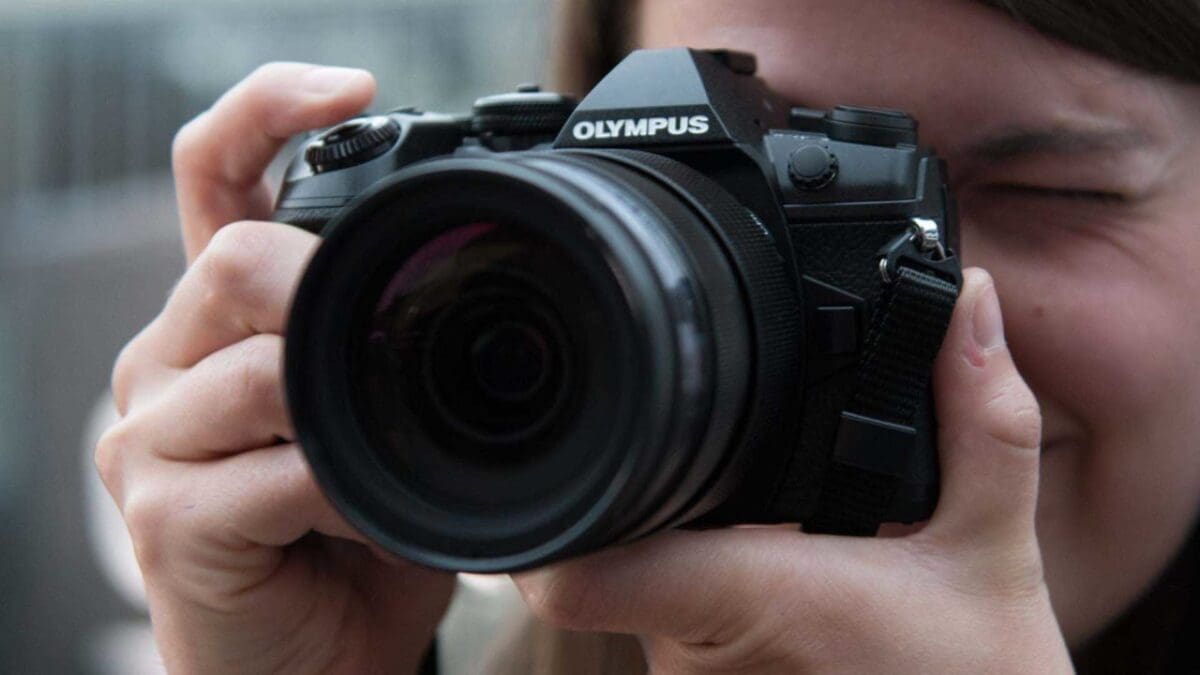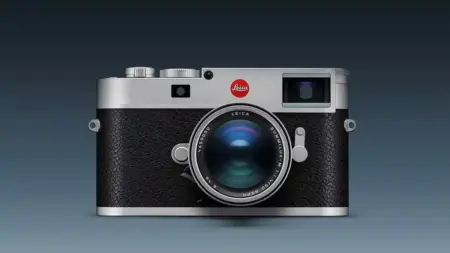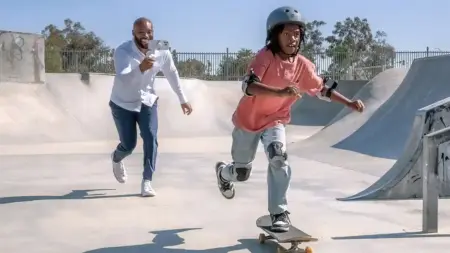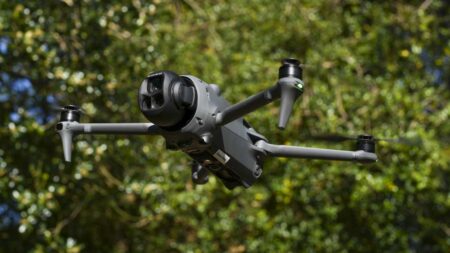In recent years, we’ve heard a lot about cameras with IBIS, or in-body image stabilization. This exceptionally useful technology physically shifts your sensor to compensate for camera movements. But image stabilization comes in other forms, and has been around for a lot longer than you might think. In fact, this technology has been around since the 1990s. If you’re new to photography, or even new to digital cameras, you might be asking yourself, What is image stabilization?
What is image stabilization?
Image stabilization is a camera feature that helps to compensate for the small movements that can occur during the physical act of taking photos. These movements can be caused by anything, from the natural shake of your hand to a breeze, or even the physical act of pressing the shutter button during a long exposure.
IS, as image stabilization is abbreviated, is designed to prevent what’s called ‘camera shake’ and make it easier for photographers to take sharp, clear photos, even when shooting in low-light conditions or with a slow shutter speed. Image stabilization is especially useful for those who need to shoot handheld or keep their camera steady for long periods of time.
OIS vs EIS
For a long time, there were two types of image stabilization: optical image stabilization (OIS) and electronic image stabilization (EIS). OIS uses a floating element within the lens construction and works by physically adjusting the position of the element to counteract any movement of the camera during the exposure. This helps to maintain a stable image and produce sharp, clear photos.
OIS uses sensors to detect camera movement and adjust the lens accordingly. The lens element is mounted on a floating platform, which is controlled by a motor. The motor moves the lens element to counteract any camera movement, keeping the image stable. Some OIS systems use multiple lens elements, which can move independently of each other to provide even more stability.
OIS is especially useful in low light conditions or when shooting with a slow shutter speed. It helps to produce sharp and clear photos, even when hand-holding the camera. This makes OIS a popular feature for photographers who don’t have access to (or don’t want to carry) a tripod or who want to take photos in challenging conditions.
OIS can also be useful for videography, as it helps to keep the image stable during camera movement. This results in smoother and more professional-looking video footage, which is especially important for videographers who want to capture action scenes or moving subjects.
EIS, on the other hand, uses software to digitally adjust the image, allowing the camera to compensate for any movement. Both types of image stabilization work to produce sharper and clearer photos, although OIS is generally considered to be the more effective of the two in terms of image quality.
What is In-Body Image Stabilisation?
In-Body Image Stabilization (IBIS) is a camera technology that reduces camera shake and blurriness in photos. Unlike lens-based image stabilization, IBIS is built into the camera body, and it stabilizes the image by physically shifting the image sensor instead of a lens element.
IBIS works by using sensors to detect camera movement, and then adjusting the position of the image sensor accordingly. The image sensor is mounted on a floating platform, which is controlled by a motor. The motor moves the image sensor to counteract any camera movement, keeping the image stable. Some IBIS systems use multiple sensors, which can move independently of each other to provide even more stability.
IBIS is especially useful for photographers who want to use non-stabilized lenses, as it provides stabilization even if the lens doesn’t have it. This makes it possible to use older or more affordable lenses and still get stable and sharp images. Additionally, IBIS can provide additional stability when used in conjunction with lens-based image stabilization, resulting in even better image quality.
The first consumer camera to feature in-body image stabilization was the Pentax K-5 II, released in 2012. Since then, many other camera manufacturers have included IBIS in their cameras, including Sony, Olympus, and Fujifilm.
Lens-based vs in-body image stabilization?
There is some debate about whether IBIS and lens-based IS can both be considered optical image stabilization. OIS moves the optical path of the light through the lens. IBIS moves the sensor, the thing the light lands on. Technically, it’s all part of the optical system, but it’s also different. But let’s not get bogged down in semantics. Let’s take a look at the difference between lens-based and in-body IS.
Lens-based OIS uses a moving lens element to counteract camera movement, producing stable and sharp images. This is built into the lens and is useful for photographers who want to use stabilized lenses with different cameras.
Depending on what brand of lens you’re using, there are often different IS modes for different types of movements. Typically they’ll correct pitch and yaw movements, but there are also modes that instruct the lens to ignore intention movement, such as panning.
In-body IS, on the other hand, stabilizes the image by physically shifting the image sensor instead of part of the lens. This type of IS is built into the camera body and provides stabilization even if the lens doesn’t have it. In-body IS is useful for photographers who are on the move, such as sports photographers and photojournalists, as well as those who simply use non-stabilized lenses.
What’s more, IBIS and lens-based IS can work in tandem to provide even more stability. When using certain stabilized Canon RF lenses, for instance, on Canon EOS R system bodies with IBIS, you can extend the stabilization even further. What happens is the IS unit in the lens sends data to the camera’s image processor, which shares this information with the sensor. Both the floating lens element and camera sensor then adjust in real-time to compensate for the movement. In some cases you can achieve up to 8 stops of shutter speed compensation when using stabilised lenses on a camera body with IBIS.
When to use image stabilization
Generally, it’s a good idea to use IS/IBIS whenever the shutter speed falls close to or below the traditionally safe figure of 1/the effective focal length of the lens. For example:
100mm lens on full-frame – 1/100sec
100mm lens on APS-C – 1/150sec
100mm on Micro Four Thirds – 1/200 sec
These days, you can generally keep the IBIS/IS on all the time. Early systems used to struggle when the camera was mounted on a tripod and would compensate for movement that wasn’t happening, but these days they can deal with that so it’s not necessary to turn it off, although we still do occasionally.
Optical Image Stabilisation vs Digital Image Stabilisation: what’s the difference?
Optical Image Stabilization (OIS) and Digital Image Stabilization (DIS) are two types of image stabilization used in cameras to reduce blurriness caused by camera shake.
OIS uses a physical mechanism, such as a lens or a moving image sensor, to counteract camera movement. This type of stabilization is performed optically, before the image is captured and processed. OIS is typically more effective and provides better results compared to DIS, but it also requires more complex and expensive hardware.
DIS, on the other hand, is a software-based solution that compensates for camera movement by adjusting the image electronically. It works by cropping the image and using image processing algorithms to stabilize the remaining portion of the image. DIS is less effective than OIS but is a more cost-effective solution and can be added to cameras that do not have OIS hardware.
What are the best cameras with image stabilization?
So you’re sold on the usefulness of image stabilization? That’s great! It’s one of the most useful features in modern cameras, and it’s one that we on the Camera Jabber team look for when making our own purchases. It probably goes without saying that the best cameras with image stabilization are going to be the flagship models from the big brands. The Canon EOS R5, Canon EOS R3, Nikon Z9, Sony A7R V and others. But if we’re honest, if you’ve stumbled across this page trying to find the answer to ‘what is image stabilization’, then you’re probably at the beginning or middle of your photographic journey, and you’re likely not in the market for one of those cameras.
So what are the best cameras with image stabilization aimed at enthusiasts with a more modest price tag? Olympus or OM Digital Solutions is widely regarded to have the ‘best’ IBIS, but it also benefits from the fact that the Micro Four Thirds sensor is smaller and can therefore have a wider range of movement. Some of cameras with IBIS can also combine IBIS with the lens-based IS for greater shutter speed compensation. These are our recommendations…
Canon EOS R7
Of all the enthusiast options, the Canon EOS R7 is perhaps the best camera with image stabilization. Canon was late to introduce IBIS to its mirrorless cameras, but when it did, it did so with gusto. The APS-C EOS R7 corrects camera shake across 5 axes for video and stills and provides up to 8EV shutter speed compensation.
The IBIS in the R7 also enables another neat trick: horizon correction, which can be used when shooting stills or video. This feature is activated via the menu and it uses the sensor’s ability to move to correct a sloping horizon. You can see its impact in the viewfinder and on the screen on the back of the camera.
There’s also a digital stabilization option designed for video that can set to standard or ‘Enhanced’ mode, with the latter resulting in a dramatic crop.
Sony A7 IV
Sony’s all-rounder full-frame option from its A7 series of cameras may not have the attractive budget price tag of its predecessor, but it’s still an affordable option and marks a significant upgrade in features compared to the Sony A7 III (see our Sony A7 IV vs A7 III comparison for more).
Among these improvements, its 5-axis image stabilisation system now offers 5.5EV shutter speed compensation and boasts an ‘Active Mode’ that is designed for use when shooting video and crops the image slightly.
Fujifilm X-T5
The Fujifilm X-T5 was one of the most anticipated releases of 2022, and for good reason. It has a host of exciting features, among them an upgraded image stabilization system. The 5-axis in-body image stabilization system has been uprated and can now provide up to 7EV shutter speed compensation with compatible stabilised lenses.
Fujifilm’s Pixel Shift Multi-Shot technology has also been added to enable images to be captured with four times the normal resolution. This mode uses the IBIS system to move the image sensor precisely between shots taken at 20fps (frames per second) with a single press of the shutter release. Photographers can then composite the images into one 160MP image using Fujifilm’s Pixel Shift Combiner software.
Best budget action camera with image stabilization
Interchangeable lens cameras aren’t the only cameras with image stabilization. Action cams rely on image stabilization to keep video footage smooth and stable as the cameras bobble around on their users’ bike helmets or surfboard. Action cameras use digital image stabilization, but for some brands like GoPro and DJI, their EIS is so good that you will not notice any drop-off in image quality. In fact, your video footage will look like it was filmed on a professional gimbal.
GoPro’s HyperSmooth and DJI’s RockSteady technologies are the leaders in action camera image stabilization, and no one else is close to them. However, if we’re going to pick the best budget action camera with image stabilization, we’re going to have to go with GoPro.

GoPro Hero10 Black
GoPro’s HyperSmooth debuted all the way back in the Hero7 Black (we’re now on the GoPro Hero11 Black) and redefined what’s possible with digital stabilization technology. The Hero10 Black isn’t the latest GoPro you can buy, but it’s price tag is now £200/$200 cheaper than it was a year ago when it launched.
With the Hero10 Black, GoPro debuted its HyperSmooth 4.0 upgrade, which in the Hero10 is available in 5.3K @ 30fps, 4K @ 60fps and 2.7K @ 120fps modes. The in-camera horizon levelling has also been boosted with a tilt limit increase from 27º to 45º when shooting in 4K60, 2.7K120 and 1080p120. This is a powerful budget action camera with image stabilization you can count on reliably.
OM System OM-D E-M5
According to OM System, the image stabilisation system in the OM-5 is 15% better than the system in the E-M5 Mark III and this means that it’s capable of delivering up to 6.5EV of shutter speed compensation and when it’s used with a compatible stabilised lens, it can give up to 7.5EV shutter speed compensation. That’s very useful when you’re travelling light because there’s less need to carry a tripod.
The OM System OM-5 has a Hand-held High Res Shot mode alongside the Standard or Tripod mode. In high Res Shot mode, the OM-5 uses the sensor-shifting capability of the stabilisation system to move the sensor between shots as it takes a series of 8 images in quick succession. These files are then composited into a singe larger image.
In Standard or Tripod High Res Shot mode, and when shooting Jpegs, the OM-5 can be set to produce 80MP, 50MP or 25MP images, and when shooting raw files the output is equivalent to an 80MP image. In Hand-held mode the maximum output size drops to 50MP for either file type and 25MP is selectable when shooting Jpegs.





Leave a Reply